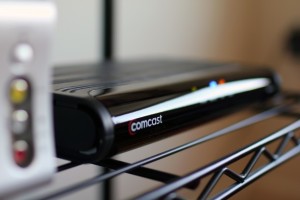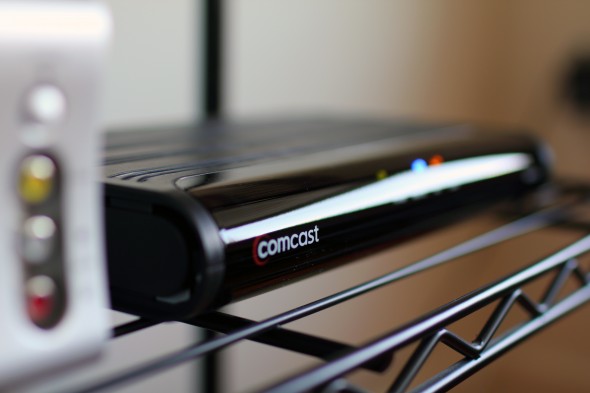
Here’s How TV Might Change if the Cable Box Goes Away
Here’s How TV Might Change if the Cable Box Goes Away
The technology already exists to give third-party apps and devices access to cable content. The question is whether the cable companies will support it.
You may soon have the chance to say goodbye to that mostly useless cable TV box.
Its replacement might resemble one of the many streaming devices on the market, like Apple TV and Google’s Chromecast. Maybe it will be a new kind of remote-control device. Or, if your TV connects to the Internet, you may not need new hardware at all. But the most important change probably won’t be in the hardware—it will be in the user experience.
President Obama recently endorsed a proposal from FCC chairman Tom Wheeler, first unveiled in February, to “unlock” the set-top box market. Wheeler says new rules would save households from having to spend an average of $231 per year to rent cable boxes and “remove barriers to innovation” in devices and apps for playing cable content.
Essentially, the FCC is proposing that the cable companies should have to provide third-party developers of apps and devices access to three important streams of data: information about channels and programming that can help consumers discover cable content, information about what any given device should be allowed to do with the content (recording it, for example), and the video programming itself.

Access to that information would allow technologists to devise alternatives to the traditional experience of watching cable television, which for the vast majority of cable subscribers is entirely controlled by their provider.
So what kinds of new things might we see if the FCC succeeds at unlocking cable content from its box?
New guides would help you navigate the diverse and growing universe of video content. Novel interfaces would make it easier to figure out whether you could watch a movie or TV episode for free on cable or Netflix instead of paying to watch it on-demand. A search engine that includes information from your streaming subscriptions, your cable subscription, and other online content might help you discover new stuff. Recommendation engines that draw on data about what you and your friends watch might help with that, too.
John Bergmayer, senior staff attorney for the consumer advocacy group Public Knowledge, was part of a group that in December showed FCC officials what this new user experience might look like. They demonstrated how different kinds of platforms, including a modified Google Fiber box and a Windows app, could be used to mix and match content from multiple sources—Comcast cable TV, a feed from Google Fiber in Kansas City, and online streaming video content.
It also showed that the technology needed to give third-party apps and devices access to cable content already exists, says Bergmayer. “It’s just a matter of using it.” First, though, cable companies would have to support technical standards based on those technologies.
But the FCC has been trying to unlock cable content since 1996, and the cable industry has for the most part prevented it. If the agency gets its way this time, the companies stand to lose out on substantial revenue from set-top box rentals, and also might lose the ability to make deals to promote certain content in the user interface, or sell ads to appear there.
Of course, exactly how our post-cable-box world will look will depend on the specific text of the rule, which hasn’t been revealed yet. The FCC is now going through the tens of thousands of public comments it received after publishing the new proposal.
Depending on the final text, it’s possible the new rule could lead to a scenario in which the cable companies manage to avoid supporting whatever new interface emerges, says Mitch Stoltz, senior staff attorney for the Electronic Frontier Foundation. “That is a clear and present danger.”

Leave a Reply